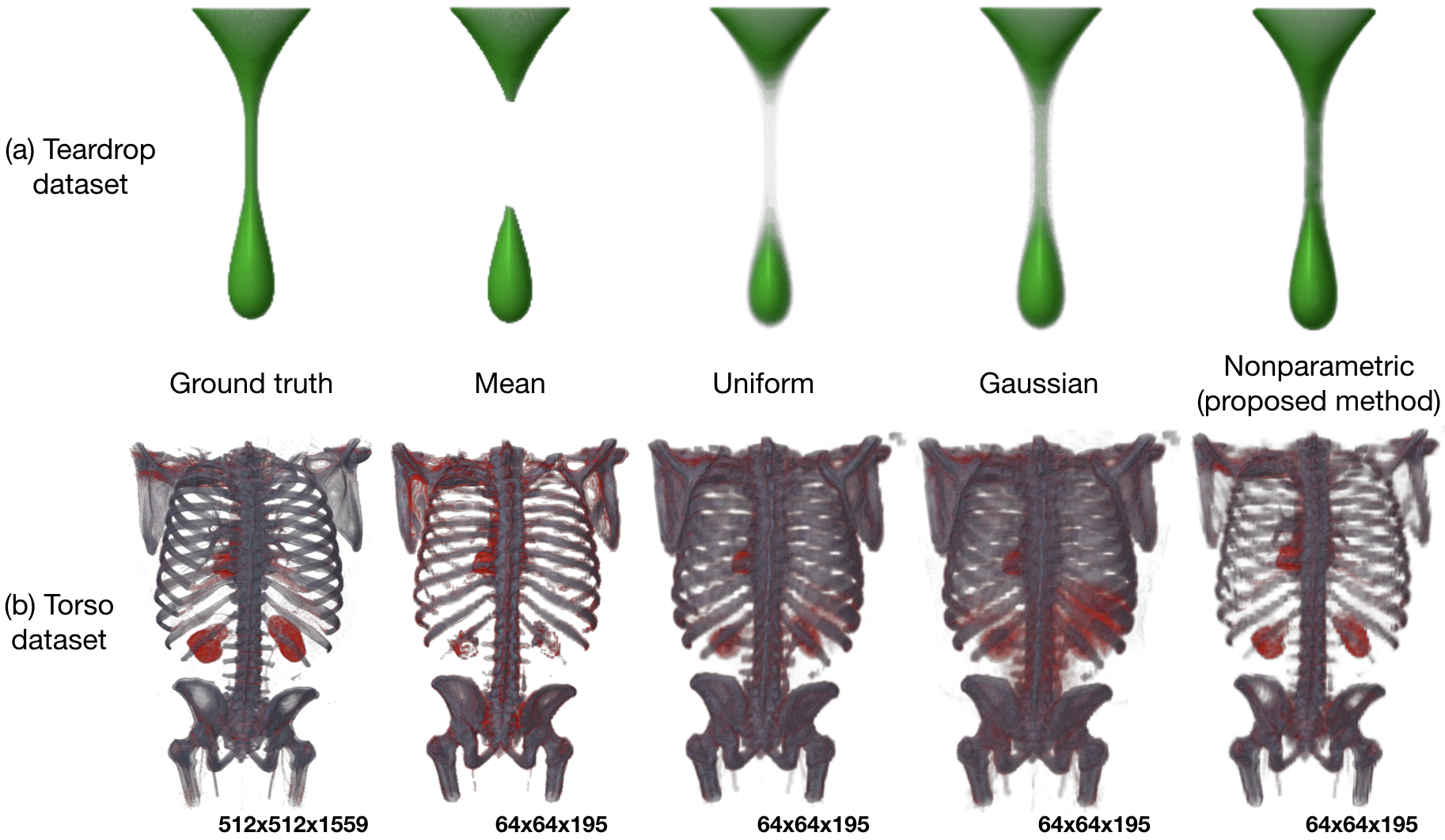Direct Volume Rendering with Nonparametric Models of Uncertainty
Tushar Athawale, Bo Ma, Elham Sakhaee, Chris R. Johnson, Alireza Entezari
External link (DOI)
View presentation:2020-10-28T18:00:00ZGMT-0600Change your timezone on the schedule page
2020-10-28T18:00:00Z

Fast forward
Direct link to video on YouTube: https://youtu.be/3R2dlFj5qoc
Keywords
Volumes, uncertainty, nonparametric, 2D transfer function
Abstract
We present a nonparametric statistical framework for the quantification, analysis, and propagation of data uncertainty in direct volume rendering (DVR). The state-of-the-art spline-based statistical DVR framework allows for preserving the transfer function (TF) of the ground truth function when visualizing uncertain data; however, the existing framework is restricted to parametric noise assumption. In this paper, we address the limitations of the existing DVR framework by extending the DVR framework for nonparametric noise distributions. We exploit the quantile interpolation technique to derive probability distributions representing uncertainty in viewing-ray sample intensities in closed form. The closed-form formulation of our framework allows for accurate and efficient computation of results. We demonstrate the effectiveness of our proposed nonparametric statistical models through qualitative and quantitative comparisons with the mean-field and parametric statistical models, such as uniform, Gaussian, and Gaussian mixtures. In addition to our contributions in nonparametric statistics, we present an extension of the state-of-the-art spline-based parametric framework to 2D transfer functions for improved DVR classifications. We show the applicability of our uncertainty quantification framework to ensemble, downsampled, and bivariate versions of scalar field datasets.